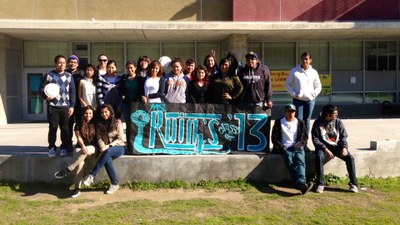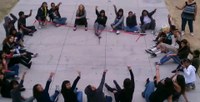Senior Pathways Lead

Overview
At ALC, our students are placed in a Pathways Class during their first year of high school. This Pathways Class serves the purpose of an Advisory Class. The students stay in that Pathways class during their high school career. Each year has a specific theme: 9th grade, Foundations Pathways; 10th Grade, Academic; 11th Grade, Leadership; and 12th grade, Community. During their 12th grade year, students register for the SAT and ACT, apply for colleges, financial aid, and submit intend to register forms during their Pathways class.
Senior Pathways Lead Role
In the past, the Miguel Contreras Learning Complex has shared a college counselor. This year, due to a limited budget, the college counselor position was not funded. Instead, the Pathways teachers were left with a written guide from the former college counselor to help the students fulfill senior deadlines.
As a Social Justice Educator, I took it upon myself to help the seniors at ALC succeed in registering it for the ACT/SAT, submitting CSU/EOP Applications, private & community college applications, and their intent to register forms. To prepare students and parents for the FAFSA application, I co-planned a FAFSA Saturday Workshop and co-facilitated the workshop with the Leadership Development Coordinator.
Learned
Being the Senior Pathways Lead was perhaps the hardest thing to do this year. I became the unofficial “college counselor” at ALC . As such, students from different Pathways classes came to me for help in submitting their applications. During the PSAT Testing day during the fall semester, my room became the college application hub. ALC seniors fluctuated in and out of my room with questions about the application process and for advice on which schools to apply for. Some came to ask for the codes to send their test scores for the CSU schools and others who are undocumented, came to ask questions about what to put in their Social Security box or to ask about the fee-waiver process. Together with the other  senior teachers and with the seniors, we found the answers to various questions.
senior teachers and with the seniors, we found the answers to various questions.
At the beginning of the Spring Semester, the students began to fill out their FAFSA or Dream Act applications. I held the parent-student workshop and advised students on how to fill out the CSS Profile for private colleges. Once college admissions letters came in, the students turned in their letter to be photocopied and displayed both in my room and the ALC office. I also sent out reminders to the other Pathways teachers to remind their students to submit their intend to register forms before the deadline.
my room and the ALC office. I also sent out reminders to the other Pathways teachers to remind their students to submit their intend to register forms before the deadline.

The biggest leadership lessons learned through this activity was the importance of communicating information with teachers, parents, staff members, and students. I learned that by making everyone aware of important deadlines and answers to common questions, it would speed up the process of having our students apply for colleges and financial aid. I also learned that my coworkers each had strengths in the knowledge of applications and we each shared what we knew with each other. Also, if the other Senior Pathways Teachers and got stumped on a question and called a help hotline, we shared that question and answers with everyone so that if another student had the same question, they would be able to answer it immediately.
Standards Met
STANDARD 1: A SCHOOL ADMINISTRATOR IS AN EDUCATIONAL LEADER WHO PROMOTES THE SUCCESS OF ALL STUDENTS BY FACILITATING THE DEVELOPMENT, ARTICULATION, IMPLEMENTATION, AND STEWARDSHIP OF A VISION OF LEARNING THAT IS SHARED AND SUPPORTED BY THE SCHOOL COMMUNITY.
- 1.1: Facilitate the development of a shared vision for the achievement of all students based upon data from multiple measures of student learning and relevant qualitative indicators.
- 1.2: Communicate the shared vision so the entire school community understands and acts on the school’s mission to become a standards-based education system.
- 1.4: Identify and address any barriers to accomplishing the vision.
- 1.5: Shape school programs, plans, and activities to ensure that they are integrated, articulated through the grades, and consistent with the vision.
- 1.6: Leverage and marshal sufficient resources, including technology, to implement and attain the vision for all students and all subgroups of students.
Supporting Documents

